#dutch colonialism
Text
Went to a Dutch art exhibit today and I was genuinely very surprised and pleased to see the transparency about the Dutch participation in the slave trade and how extensive it was. It did not shy away from talking about how Amsterdam's wealth was built on the back of slavery, nor did it refuse to talk about the freed black individuals from around the globe who were treated as second class citizens at best despite their official status as being free people.
One of the books had a massive section dedicated entirely to talking about the origins of the products in the paintings and what the Dutch were actually doing to obtain them and just outright saying "yeah this entire island's native inhabitants were either murdered or forced off their land for cinnamon plantations that African slaves were worked to death on" for one example.
It is very far from what a true effort to remedy these injustices would involve but I will not fault the national honesty of admitting how badly they fucked up and how awful their contributions were. This is a very important first step to educating people about the dangers and costs of colonialism and it's far better than what a lot of other countries would be willing to do.
8 notes
·
View notes
Text
I have a lot gripes with dutch history education in general but some of this has to be wilful ignorance. you can’t be an adult and seriously look back on the """"golden age"""" as something good. you can’t seriously think the colonisation we committed is anything but horrific. “well we gave them better education and infrastructure” “well at least we weren’t as bad as the british” what if I killed you. I don’t know how to get it through to you that the only amount of colonialism that’s acceptable is none! zero! nothing!
“it was so long ago–” one, it wasn’t. two, it doesn’t matter shit how long ago it was when we as dutch people still benefit from it and the people we colonised are still affected negatively by it.
also, the amount of people who think things like racism and police brutality aren’t problems or don’t even exist here??? no amount of pointing and laughing at the united states and diverting the attention is going to make the netherlands some kind of perfect paradise. pretending problems don’t exist doesn’t magically make them go away.
and blackface being “part of our traditions” doesn’t make it “okay” holy shit! it just makes them racist traditions! and you can say “the children don’t care”—yeah exactly. kids don’t care if the pieten are roetveegpieten or ones with full blackface. but how about black kids? don’t they deserve to enjoy sinterklaas? don’t they deserve to be children too?
and the sheer amount of people who believe this shit too! I fucking hate you all
#elli rambles#dutch#dutchblr#<- swallowing my pride and using that tag in the hope there will at least be a few people who see this & maybe reevaluate their behaviour#dutch colonialism#dutch on main
34 notes
·
View notes
Text
TIL:
“Sibori Amsterdam was born around 1654 as the eldest son of Sultan Mandar Syah and his consort Lawa.[1] The Dutch leanings of his father made him name two of his sons after cities in the Netherlands - a junior brother was called Prince Rotterdam.”
2 notes
·
View notes
Text


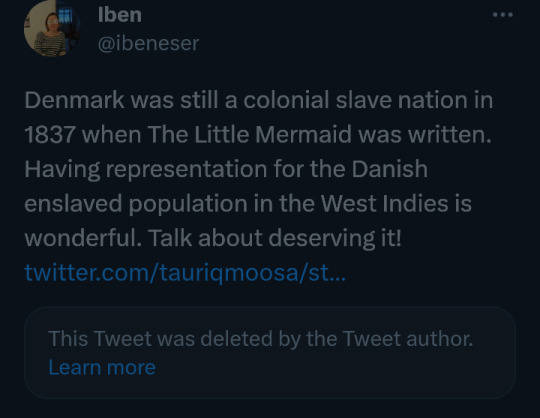




#tlm 2023#the little mermaid 2023#backlash#representation#french caribbean#dutch caribbean#black caribbean#afro caribbean#french colonialisn#dutch colonialism#tlm takes#pop culture#trinidad & tobago
5 notes
·
View notes
Text
colonization wasn't started by the europeans in the 1500s.
so stop trying to demonize Europe and America for what they have don't that MANY cultures around the world have already done.
and yes using the term "colonizer" is a racial slur and stop suing it.
#colonization#colonialsm#colonies#european history#englands#uk#america#france#dutch#enlglish#white people#colonizer#racial slurs#rome#greece#asia
336 notes
·
View notes
Text



October 29, Den Haag - Stop de Nederlandse medeplichtigheid aan genocide in Gaza!
#palestine#palestina#free palestine#nederland#netherlands#den haag#solidarity#the hague#anti-colonialism#apartheid#occupation#dutchblr#dutch#nederblr
203 notes
·
View notes
Text
It’s #CapybaraAppreciationDay!
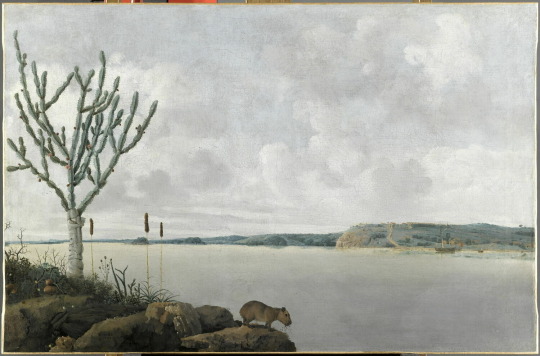
Frans Post (Dutch, 1612–1680)
View of the Rio São Francisco Brazil with Fort Maurits and a Capybara, 1639
oil on canvas
Musée du Louvre
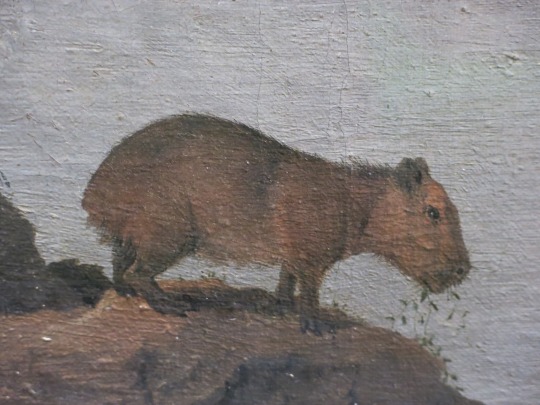
closeup of the capybara
#capybara#Capybara Appreciation Day#animal#holiday#animals in art#Dutch Brazil art#colonial art#Frans Post#17th century art#European art#landscape art#Musée du Louvre#painting#oil painting
353 notes
·
View notes
Text
lowkey losing my shit at the comedic potential of mid/late 18th century British-Danish relations, particularly this part
During its heyday, the Danish East Indian Company and the Swedish East India Company imported more tea than the British East India Company — and smuggled 90% of it into Britain, where it sold at a huge profit.
first off, that's hilarious. second, the potential of Alfred and Mathias running into each other because they're both smuggling tea to sell in England is fucking incredible. and if it's before 1772, then both Alfred and Mathias are members of Arthur's own fucking household.

#hetalia hc#hetalia hcs#hetalia headcanons#historical hetalia#hetalia headcanon#hws america#hws denmark#okay they're OCCASIONAL members of Arthur's household#presumably Alfred mostly lives in the colonies and Mathias in Copenhagen#but Britain and Denmark have a royal marriage during this time and that's as good excuse as any#arthur: I don't understand. where is everyone buying such cheap tea from??? the EIC should be making much more profit than this#mathias: wow that's so weird. don't have a clue how that's happening#alfred: I bet it's ned's fault#mathias: yeah that dutch bastard always gets away with everything
66 notes
·
View notes
Text


Thanks to tafkarfanfic for sending the listing for the 1789 Jonathan Brooks House, a Dutch Colonial home in Medford, Massachusetts. It's on the National Register of Historic Places, and has 5bds, 1.5ba, & 6 fireplaces. Price cut $25K to $1.1M. I'm always suspicious when there's a price cut, but when I saw what they did to the inside, I understood why it's not selling.

Who is advising homeowners to modernize their beautiful historic homes, like this? That confounded gray and white. I think I'm in a modern apt. living room, here.

They left the fancy carved fireplace, but painted it white to minimize the pretty colonial details that don't fit in with the sleek contemporary look.
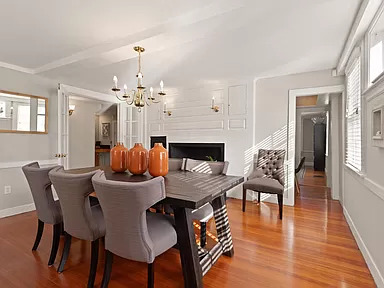
The dining room has a true, colonial fireplace wall.
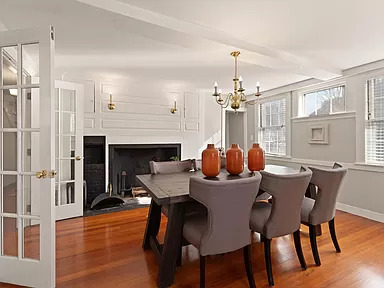
I can't see the original cupboards b/c they've either been modernized to black or obscured. Notice that any beams in the ceilings were painted white, or removed.

Wait, I see a brick wall that's been painted black. I would go to the Home Depot and get gallons of Zip Strip and strip the hell out of these fireplaces.

If you're a purist, it's best that you just forget the kitchen and move on. It's a beautiful kitchen, but for new builds or more modern homes.

This home was built in the 1700s. There HAS to have been a cooking fireplace in here that they removed. I thought that they protected these historic homes from things like this.

Nice flagstone sun porch. (Did you know that the colonists were very into skylights?)

This is the half bath, which is nice to have, but 1 full bath for 5 bedrooms to share in a house that's $1.1M just won't cut it.

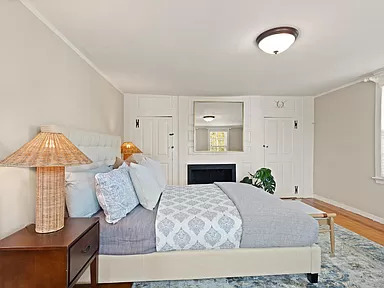
Something's off about the fireplace wall in the primary bedroom. The mirror is centered, but the fireplace isn't. I think that they should've left it plain b/c of the doors and cupboards.

This is odd. They must've built the narrow cabinet in the back so that they could have a place to put things, but then they awkwardly placed pedestal sinks in front of it.
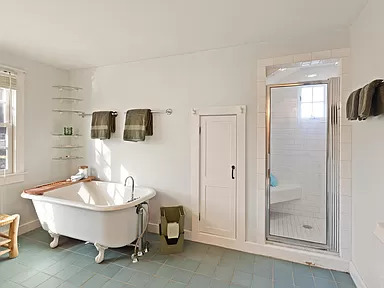
Mini claw-foot tub and a modern built-in shower. That little closet must be an original feature.
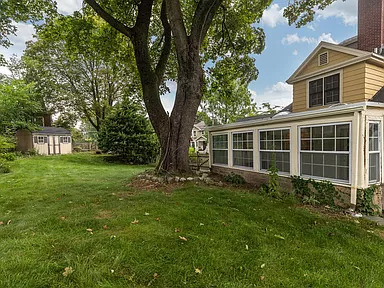
There's a nice back yard with a shed.

And, the house itself is built on a fork in the road.
66 notes
·
View notes
Text
Because most medicines were produced from [...] plants [...] these early “pharmaceutical monopolies” required full control of the production and trade of a species. Russia successfully managed the rhubarb trade in the seventeenth and eighteenth centuries, while Spain controlled the distribution [...] from Spanish America, mainly cinchona from Peru, in the same period. “True” cinnamon grew only on Sri Lanka, so whoever controlled the island could dominate the cinnamon trade. The Portuguese were the first to create a monopoly on the cinnamon trade there in the early seventeenth century. That monopoly was later optimized by the Dutch in the late eighteenth century [...].
“True” should indeed be in quotation marks here - the term reflects the historically contingent tastes of Europeans, rather than any botanical category [...]. The rarity of cinnamon in the early modern period made it one of the most coveted spices of that era, and European countries without direct access to the cinnamon trade tried to imitate, substitute, steal, smuggle, or transplant the “true” product from Sri Lanka. [...]
---
In the early modern period, cinnamon was also important both as an exotic commodity and as an important therapeutic substance. The Dutch East India Company (VOC), which controlled Sri Lanka between 1658 and 1796, was well aware of this. The VOC vigorously exploited the Salagama - [...] specialized Sri Lankan cinnamon peelers - to supply enough cinnamon, which for a long time was gathered from forests. Only after the peelers rebelled, leading to a war that lasted between 1760 and 1766, did the company revise its production policy.
Experiments with “cinnamon gardens” (kaneeltuinen in Dutch) led to enormous successes, and the company eventually grew millions of cinnamon trees on plantations in the final decades of the eighteenth century. Meanwhile, competitors of the Dutch had come up with their own solutions [...]: Spain had started growing other Cinnamomum species on plantations in the Philippines, while France and Britain succeeded in transplanting cinnamon to islands in the Caribbean. But the Dutch monopoly was not simply threatened by outside competition. Smuggling, by peelers or VOC personnel, was strictly forbidden and severely punished. [...]
---
Hendrik Adriaan van Rheede tot Drakenstein (1636–1691) was the VOC administrator on India’s Malabar Coast when he started experimenting with cinnamon oil in the 1670s.
He concluded that the oil, which he extracted from the roots of local cinnamon trees, was of better quality than oil from cinnamon trees on Sri Lanka. Van Rheede reported these results in his entry on cinnamon in volume 1 of the Hortus Indicus Malabaricus, the twelve-volume book that was produced by a team of local and European scholars, and supervised by Van Rheede himself.
Van Rheede’s assessment of cinnamon - in fact, the very publication of a multi-volume work about the flora of Malabar - infuriated the governor of Sri Lanka, Rijckloff van Goens, who had secured the cinnamon monopoly of Sri Lanka for the Dutch. Van Goens insisted that Van Rheede stop his medical experiments, claiming that the monopoly was at risk if the cinnamon trade was extended beyond the island of Sri Lanka.
But Van Goens was not so much concerned about the therapeutic efficacy of cinnamon from either of the two regions. He was motivated by an imperial agenda and regarded the natural products of Sri Lanka as superior to anything similar in the region.
The experiments of Van Rheede, who was his former protégé, threatened not so much the botanical quality of the product, or the commercial interests of the Dutch East India Company, but rather the central position of Sri Lanka in the Dutch colonial system and the position of Van Goens as the representative of that system.
---
Even when Sri Lanka still only produced cinnamon that grew in the wild, the Dutch harvested enough to supply an international market and were able to dictate the availability and price level throughout the world. The monopoly, whether defined in commercial or pharmaceutical terms, was not easily put at risk by efforts like Van Rheede’s. Those involved in the early modern cinnamon trade were motivated by various reasons to defend or undermine the central position of Sri Lankan cinnamon: botanical, medical, commercial, or imperial. These motives often overlapped.
---
All text above by: Wouter Klein. “Plant of the Month: Cinnamon.” JSTOR Daily. 17 February 2021. “Plant of the Month” series is part of the Plant Humanities Initiative, a partnership of Dumbarton Oaks and JSTOR Labs. [Bold emphasis and some paragraph breaks/contractions added by me.]
150 notes
·
View notes
Text
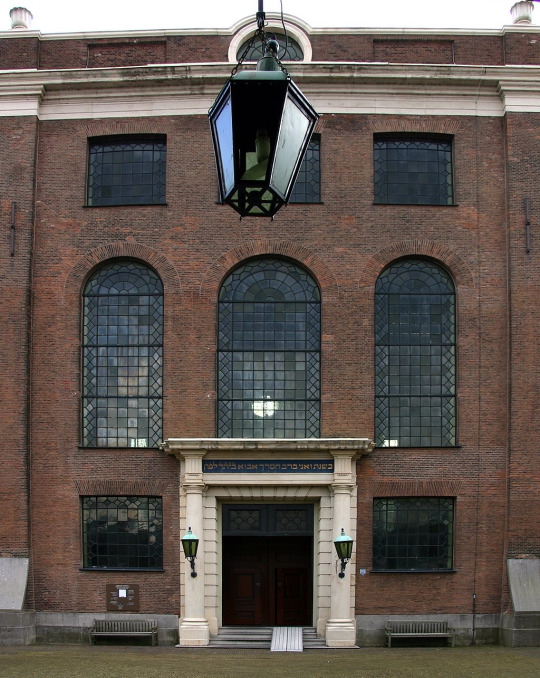

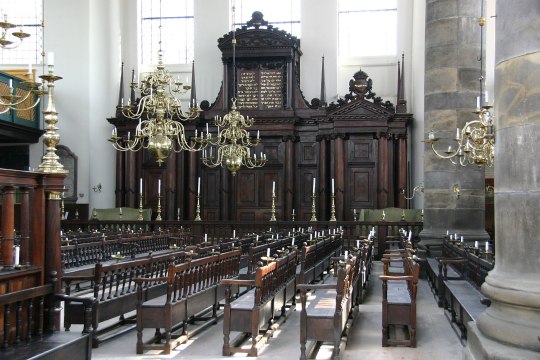

the portugese synagogue in amsterdam in the netherlands. it was founded in 1675.
while most expelled sephardic jews headed to the maghreb, ottoman territories in the middle east and eastern europe, or european colonies around the world, a minority went elsewhere in western europe, mainly to england or the netherlands. the sephardic community in the latter became the largest and richest in europe during the dutch golden age. despite the netherlands' proximity to germany, they predate the arrival of ashkenazi jews to the country by about three centuries.
#netherlands#architecture#interior#worship#jewish#sephardic#my posts#there were also hungarian sephardic jews but that's a conversation for another day#i assume most of the sephardim who came to other places in non ottoman europe were rich enough to not face the brunt of their govts#pretty sure dutch sephardim ended up in dutch colonies too like in india or south africa#not really sure about the latter since i know most of the white jews there were specifically from lithuania. long story#most of the ones who went to the americas were straight from spain/portugal or were english
38 notes
·
View notes
Text
The Curaçaoan freedom fighter Tula receives rehabilitation, and the Netherlands offers apologies.
On 17 August 1795, Tula, with 50 others, started the largest revolt in the history of the Netherlands Antilles against the Dutch tyrannical slavers. Tula fought for freedom and equality. His group traveled across the island, freeing people, and the group increased to 2000 people. The Dutch brutually crushed the revolt and captured Tula. Tula was tortured and brutually executed by the Dutch.
The Dutch government always portrayed Tula as a criminal, but today, he is declared a hero by the Dutch government (he has been a national hero in Curaçao since 2010). They also admitted that the Dutch tried to erase him from history and offered official apologies.
These are small steps, but important in the road towards reparations.

#we still have a long road to go towards reparations#but it's good that our government is taking serious steps#but we really need to work on our education about slavery and the Dutch Republic and our “Golden Age”#History#The Netherlands#Dutch#Dutchblr#Slavery#Nederland#Nederlands#Holland#Curaçao#Colonialism
78 notes
·
View notes
Text



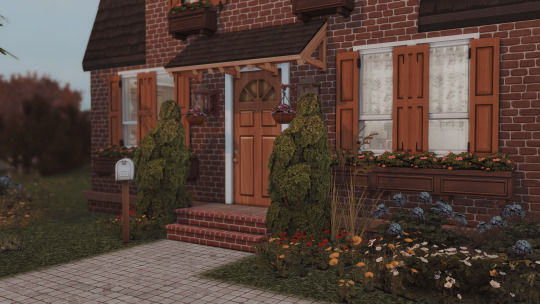




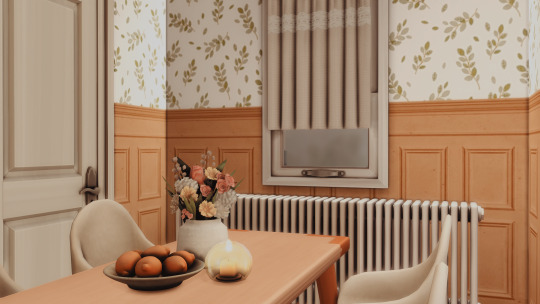

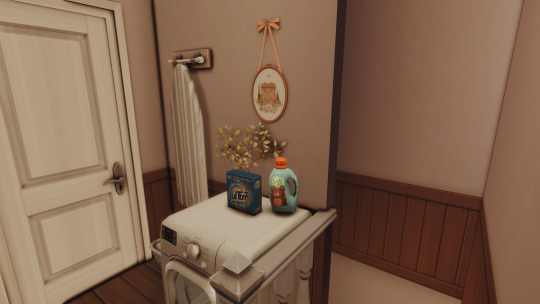


Dutch Colonial Inspired by @micsso
I have been staying in the Netherlands for a long while and I felt inspired to try and replicate some of the houses I see here. This will also be my current sim's childhood house so I tried to give it a cosy and homie feeling to it! Feel free to tag me if you use it, I would love to see it c:
Message me for a link to download the cc.
Recommended Downloads: Moriel's Plant Replacements
💌 Gallery ID: something_mia | Download link
@maxismatchccworld @ts4cc-finds @mmfinds
#Dutch Colonial Inspired#micsso#sims 4#simblr#s#ts4#s4 screenshots#the sims#s4#ts4 horse ranch#horse ranch#s4 build#ts4 build#sims 4 build#ts4cc#s4cc#s4 download#download#ts4 download
49 notes
·
View notes
Text

Gorgeous Stone Dutch Colonial | Philadelphia, PA
29 notes
·
View notes
Text
Hi, I usually don't make these kind of posts, but I wanted to say to my fellow Dutch people: The elections are in a little over a week (22 nov 2023) and news is reporting that the genocide that's happening in Palestine is not impacting voting that much. Please take the time to look into what the stance is of the party you're planning to vote on is and if they are terrible, email them and say how disappointed you are and tell them it is the reason you're not voting for them anymore unless they change their tune. All of them have email addresses on their websites and it sends a message that people do find this important and what the standpoint of the masses is, so they know that this is an important topic when they get into the Tweede Kamer to form coalitions.
#politics#israel#palastine#isreal palestine#dutch politics#news#free gaza#free palestine#genocide#ceasefire#colonialism#gaza
13 notes
·
View notes
Photo

Dutch Brazil was a colony of the Dutch Republic in the northeastern portion of modern-day Brazil, controlled from 1630 to 1654 during Dutch colonization of the Americas. The main cities of the colony were the capital Mauritsstad (today part of Recife), Frederikstadt (João Pessoa), Nieuw Amsterdam (Natal), Saint Louis (São Luís), São Cristóvão, Fort Schoonenborch (Fortaleza), Sirinhaém, and Olinda.
From 1630 onward, the Dutch Republic conquered almost half of Brazil's settled European area at the time, with its capital in Recife. The Dutch West India Company (GWC) set up its headquarters in Recife. The governor, Johan Maurits, invited artists and scientists to the colony to help promote Brazil and increase immigration. However, the tide turned against the Dutch when the Portuguese won a significant victory at the Second Battle of Guararapes in 1649. On 26 January 1654, the Dutch surrendered and signed the capitulation, but only as a provisional pact. By May 1654, the Dutch Republic demanded that New Holland was to be given back. On 6 August 1661, New Holland was formally ceded to Portugal through the Treaty of The Hague
While of only transitional importance for the Dutch, this period was of considerable importance in the historical memory in Brazil. This period also precipitated a decline in Brazil's sugar industry, since conflict between the Dutch and Portuguese disrupted Brazilian sugar production, amidst rising competition from British, French, and Dutch planters in the Caribbean.
122 notes
·
View notes